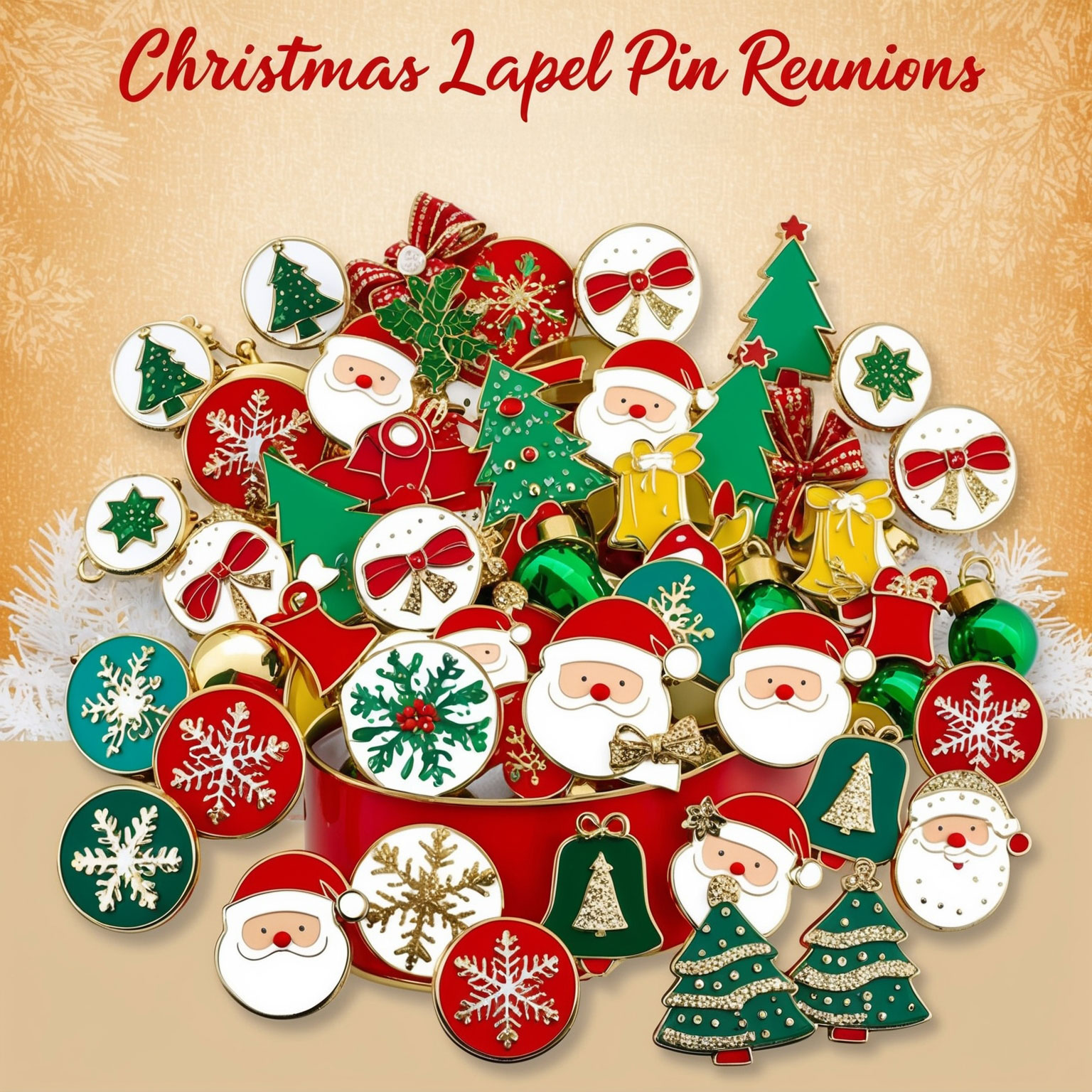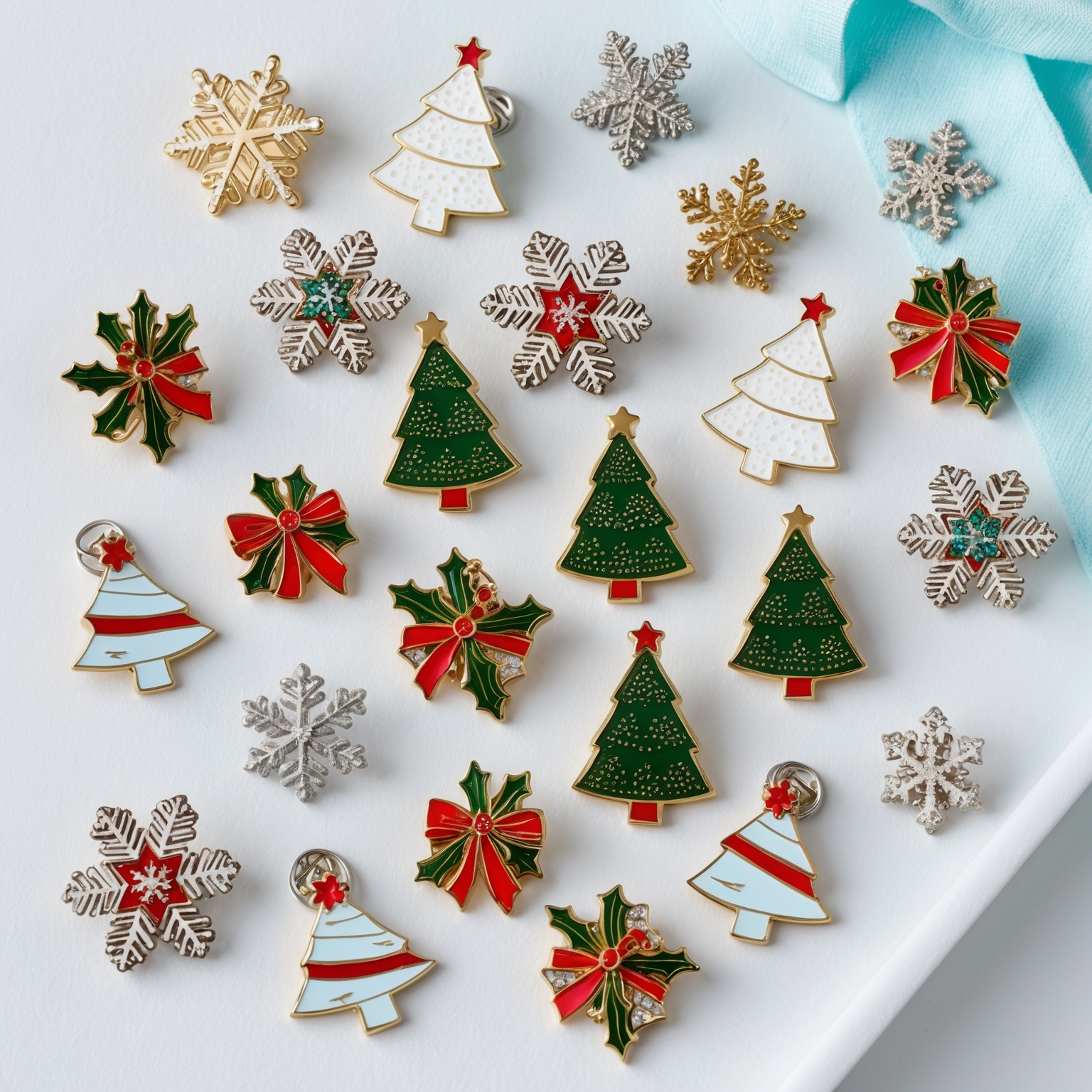The Enduring Charm of Lapel Pins
Lapel pins are small but significant accessories that have adorned clothing for centuries. From symbols of allegiance and honor to fashionable statements and promotional tools, lapel pins have evolved in their purpose, design, and cultural significance. These versatile items are cherished by collectors, used by organizations, and enjoyed by fashion enthusiasts worldwide. This article explores the rich history of a lapel pin, tracing their evolution from ancient symbols to modern-day fashion and branding accessories. By understanding the journey of a lapel pin, we can appreciate their enduring appeal and cultural relevance.
1. The Origins of Lapel Pins: Ancient Symbols of Status and Allegiance
Early Uses of Symbols and Badges
The use of symbols and badges to signify status, allegiance, and identity dates back to ancient civilizations. In Egypt, Greece, and Rome, individuals wore brooches, seals, and other decorative items to indicate their social rank, profession, or affiliation with a particular group. These early forms of a lapel pin served both functional and symbolic purposes.
Example: In ancient Rome, officials wore fibulae, decorative brooches that not only fastened their cloaks but also indicated their rank and authority.
Medieval Heraldry and Emblems
During the medieval period, heraldry became an important aspect of European culture. Knights and nobles used coats of arms and emblems to represent their family lineage and honor. These symbols were often displayed on clothing, armor, and banners. The use of small badges and pins bearing these emblems was also common, serving as markers of loyalty and identity.
Example: Knights in medieval Europe wore small badges displaying their coat of arms, signifying their allegiance to a noble house or kingdom.
2. The Rise of Lapel Pins as Political and Military Symbols
Political and Revolutionary Symbols
In the 18th and 19th centuries, a lapel pin began to emerge as symbols of political movements and revolutionary causes. During the American and French Revolutions, supporters wore pins and badges to display their allegiance and support for the cause. These pins often featured symbols such as the Liberty Bell or the tricolor cockade, becoming powerful tools for political expression.
Example: During the American Revolution, supporters of independence wore “Liberty Cap” pins, symbolizing their commitment to freedom and resistance against British rule.
Military Decorations and Insignia
The use of a lapel pin expanded significantly during the 19th and early 20th centuries, particularly in military contexts. Military personnel were awarded medals and ribbons for bravery and service, which often included lapel pins as part of the decoration. These pins served as symbols of honor and recognition, worn proudly on uniforms.
Example: In the United States, the Purple Heart medal, awarded to soldiers wounded in combat, includes a small lapel pin featuring a purple heart with the profile of George Washington.
3. The Evolution of Lapel Pins in the 20th Century
Fashion and Art Deco Influence
The early 20th century saw lapel pins becoming fashionable accessories for both men and women. The Art Deco movement, with its emphasis on geometric shapes and bold designs, influenced the creation of a stylish lapel pin that were worn as fashion statements. These pins often featured intricate enamel work and precious metals, adding a touch of elegance to formal attire.
Example: Art Deco lapel pins from the 1920s and 1930s featured geometric patterns, vibrant colors, and luxurious materials like gold and gemstones.
Corporate and Promotional Pins
As businesses and corporations grew in the 20th century, lapel pins became popular promotional items. Companies used pins to promote their brand, reward employees, and commemorate special events. These pins often featured company logos and slogans, serving as miniature advertisements and tokens of corporate pride.
Example: In the mid-20th century, airlines like Pan Am and TWA distributed a lapel pin featuring their logos and aircraft, promoting the airline industry and fostering brand loyalty.
4. The Cultural and Social Significance of Lapel Pins
Civil Rights and Social Movements
Lapel pins have played a significant role in various civil rights and social movements. Activists and supporters wore pins to show solidarity and raise awareness for causes such as civil rights, LGBTQ+ rights, and women’s suffrage. These pins often featured powerful symbols and messages, becoming iconic representations of social change.
Example: In the 1960s, supporters of the civil rights movement wore “I Am a Man” pins, a powerful statement of dignity and equality during the struggle for racial justice.
Commemorative and Memorial Pins
Lapel pins have also been used to commemorate important events and honor the memory of individuals and groups. From commemorating national holidays and historical milestones to memorializing victims of tragedies, these pins serve as tangible reminders of collective memory and shared experiences.
Example: After the September 11, 2001, terrorist attacks, many people wore a American flag lapel pin as a symbol of unity and remembrance.
5. The Modern Era: Lapel Pins as Fashion and Pop Culture Icons
The Resurgence of Lapel Pins in Fashion
In recent years, a lapel pin has experienced a resurgence in the fashion world. They have become popular accessories for adding a personal touch to clothing and expressing individual style. Fashion designers and brands have embraced lapel pins, creating limited-edition collections and collaborations with artists.
Example: High-end fashion brands like Gucci and Louis Vuitton have released designer lapel pins featuring their iconic logos and motifs, making them sought-after fashion accessories.
The Influence of Pop Culture
Pop culture has also played a significant role in the popularity of a lapel pin. Pins featuring characters from movies, TV shows, comics, and video games have become collectible items for fans. These pins often serve as a way for fans to display their interests and connect with like-minded individuals.
Example: Lapel pins featuring characters from the Star Wars franchise have become highly collectible, with fans eagerly seeking out rare and exclusive designs.
6. The Craftsmanship and Materials of Lapel Pins
Traditional Enameling Techniques
The craftsmanship of lapel pins has evolved over time, with various techniques and materials used to create these small works of art. Enameling, a process involving the application of colored glass powder to metal, has been a popular technique for creating vibrant and durable lapel pin. This technique allows for intricate designs and a wide range of colors.
Example: Cloisonné, a traditional enameling technique, involves creating compartments on a metal surface with thin metal wires and filling them with enamel. This technique is known for its durability and rich, jewel-like colors.
Materials and Finishes
Lapel pins are made from various materials, including metals like brass, copper, and stainless steel. The choice of material can affect the pin’s durability, appearance, and cost. Finishes, such as gold plating, silver plating, and antique finishes, add an extra layer of customization and enhance the pin’s overall look.
Example: A soft enamel lapel pin, which have raised metal lines and recessed enamel areas, are popular for their textured finish and vibrant colors.
7. The Role of Technology in Lapel Pin Design and Production
Advancements in Design and Manufacturing
The advancement of technology has significantly impacted the design and production of a lapel pin. Computer-aided design (CAD) software allows for precise and intricate designs, while modern manufacturing techniques enable mass production with high levels of detail and consistency. These advancements have made lapel pins more accessible and affordable for a wider audience.
Example: Digital printing technology allows for the creation of offset printed lapel pins, which can reproduce complex artwork and full-color images with high accuracy.
Customization and Personalization
Technology has also made it easier to customize and personalize lapel pins. Customers can now create unique designs, incorporate personal messages, and choose from a wide range of colors and finishes. This level of customization has made lapel pins a popular choice for commemorating special events, promoting brands, and expressing personal style.
Example: Custom lapel pins are often used for weddings, where couples create personalized pins featuring their names, wedding date, and a unique design that reflects their theme or love story.
8. Collecting and Trading Lapel Pins
The Appeal of Collecting Lapel Pins
Collecting lapel pins has become a popular hobby, with enthusiasts seeking out pins from various categories, such as sports, politics, pop culture, and more. The appeal of collecting lies in the diversity of designs, the historical and cultural significance of the pins, and the thrill of finding rare and unique items.
Example: Disney pin trading is a well-known phenomenon, with collectors trading pins featuring beloved characters and attractions at Disney parks around the world.
The Culture of Pin Trading
Pin trading has become a social activity, bringing together collectors at events, conventions, and online forums. This culture of trading allows enthusiasts to connect, share their collections, and acquire new pins. It also fosters a sense of community and camaraderie among collectors.
Example: Olympic pin trading is a long-standing tradition, with athletes, officials, and spectators exchanging pins as a gesture of goodwill and international friendship.
9. The Future of Lapel Pins: Trends and Innovations
Sustainability and Ethical Production
As consumer awareness of environmental and ethical issues grows, there is an increasing demand for sustainable and ethically produced lapel pins. This trend has led to the use of eco-friendly materials, ethical sourcing, and transparent manufacturing practices. Brands are also exploring ways to reduce waste and promote responsible consumption.
Example: Some companies offer lapel pins made from recycled metals or use biodegradable packaging to reduce their environmental impact.
Innovations in Design and Functionality
The future of lapel pins includes exciting innovations in design and functionality. From interactive elements like QR codes and augmented reality to multifunctional pins that serve as accessories and tech gadgets, the possibilities are endless. These innovations add value and enhance the user experience, making lapel pins more versatile and engaging.
Example: A tech company might create a lapel pin with a built-in NFC chip, allowing users to access exclusive content or promotions by tapping their smartphones.
The Enduring Legacy of Lapel Pins
Lapel pins have come a long way from their origins as symbols of status and allegiance. Over the centuries, they have evolved into versatile accessories that serve as fashion statements, promotional tools, commemorative items, and collectibles. Their rich history reflects the changing cultural, social, and technological landscape, making them a fascinating subject of study and appreciation.
Today, lapel pins continue to hold a special place in our hearts and wardrobes. They are cherished by collectors, valued by brands, and enjoyed by individuals who appreciate their unique charm and significance. As we look to the future, lapel pins will undoubtedly continue to evolve, embracing new trends and innovations while preserving their timeless appeal.
Whether worn on a suit jacket, displayed in a collection, or traded at events, lapel pins are more than just decorative items; they are symbols of identity, connection, and expression. As we trace the history of lapel pins, we celebrate their enduring legacy and the stories they tell.
If you are interested in some custom lapel pins, feel free to contact us at 1-855-471-6752 or fill out one of our FREE QUOTE FORMS.



